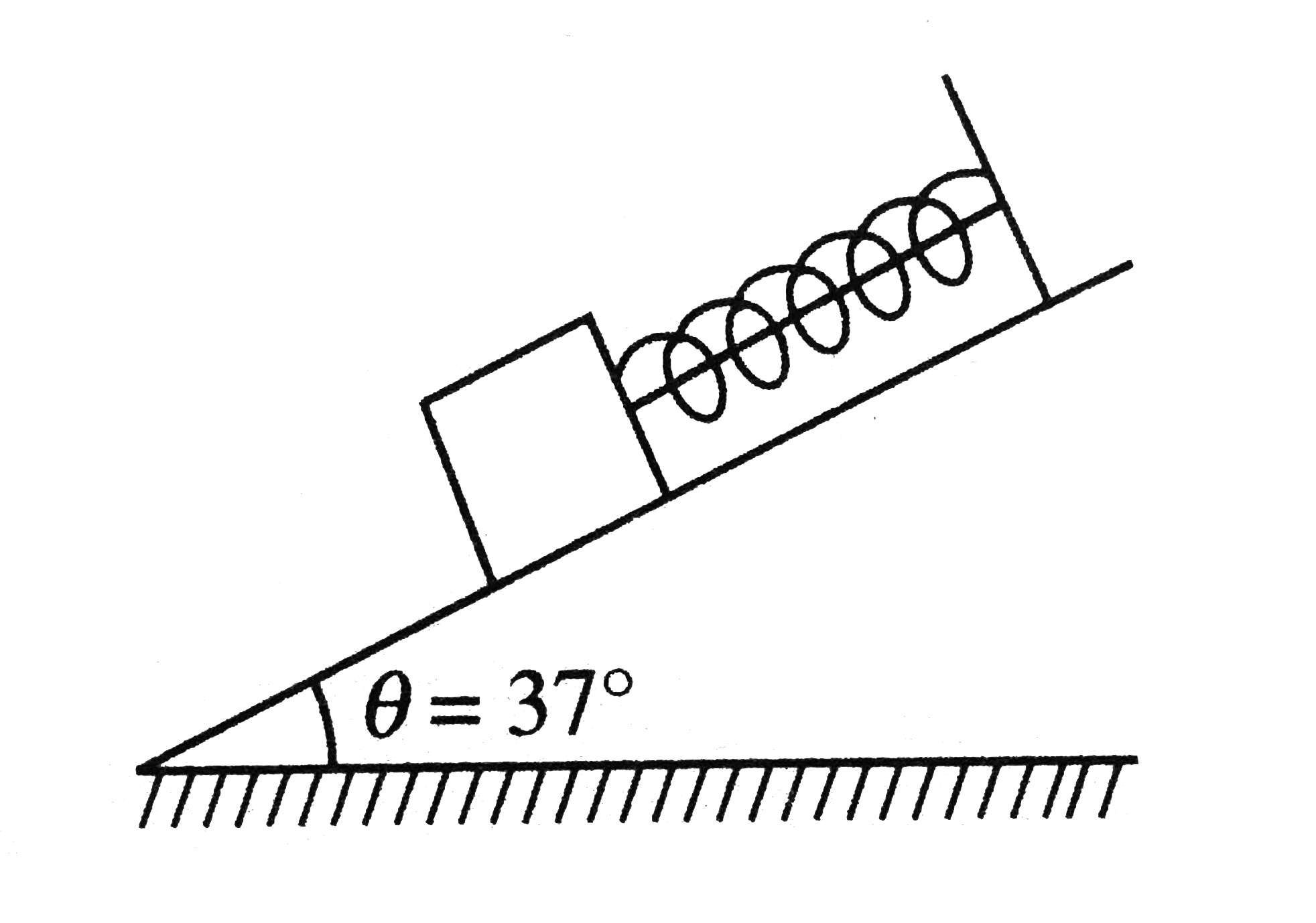One end of a massless sprinf of spring constant 100 N/m and natural length 0.5 m is fixed and the other end is connected to a particle of mass 0.5 kg lying on as frictionless horizontla table. The spring remains horizontal. If the mass is made to rotate at an angular velocityof 2 rad/s, find the elongation of the spring.
The particle is moving in a horizontal circle so it si accelerated towards the centre with magnitude v2r. The horizontal foce on the particle is due toteh spring and equals kl, where l is the elongation and k is the spring constant. Thus
kl=mv2r=mω2=mω2(l0+l).
Here omega is the angular velocity l0 is theN/Atural length (0.5m) and l0+l is the total length of the spring which is also the radius of the circle along which the particle moves.
Thus,(k−mω2)=mω2l0
orl=mω2l0k−mω2
Putting the values
l=0.5×4×0.5100−0.5×4m≈1100m=1cm.
Topper's Solved these Questions
- CIRCULAR MOTIONBook:HC VERMAChapter:CIRCULAR MOTIONExercise:Short Answer
Explore 10 Videos
- CIRCULAR MOTIONBook:HC VERMAChapter:CIRCULAR MOTIONExercise:Objective 1
Explore 15 Videos
- CIRCULAR MOTIONBook:HC VERMAChapter:CIRCULAR MOTIONExercise:Exercises
Explore 30 Videos
- CENTRE OF MASS, LINEAR MOMENTUM, COLLISIONBook:HC VERMAChapter:CENTRE OF MASS, LINEAR MOMENTUM, COLLISIONExercise:Exercises
Explore 64 Videos
- FLUID MECHANICSBook:HC VERMAChapter:FLUID MECHANICSExercise:Exercises
Explore 35 Videos
Similar Questions
One end of a light spring constant k and natural length l0 is fixed and the other end is attached to a block of mass m lying on smooth horizontal surface. If the block is rotating in the horizontal circle of radius l, find the frequency of the revolution.
View SolutionA massless spring of natural length of 0.5 m and spring constant 50 N/m has one end fixed and the other end attached to a mass of 250 g. The spring mass system is on a smooth floor. The mass is pulled until the length of the spring is 0.6 m and then released from rest. The kinetic energy of the mass when the length of the spring is 0.5 m is
View Solution
Knowledge Check
A spring of natural length 10 m and spring constant 10 N/m is connected to a ring of mass 0.1 kg, which if free to move on a frictionless horizontal bar as shown in the figure. The ring is pulled away from 'B' towards 'A' at an angle of 53∘ with vertical, and released. Find the speed of the ring at 'C' ?
 A90 m/sB60 m/sC30 m/sDzero
A90 m/sB60 m/sC30 m/sDzeroA particle of mass m is fixed to one end of a massless spring of spring constant k and natural length l0. The system is rotated about the other end of the spring with an angular velocity ω ub gravity-free space. The final length of spring is
Amω2l0kBmω2l0k−mω2Ckl0k−mω2Dmω2l0k+mω2A block of mass m is connected at one end of spring fixed at other end having natural length l0 and spring constant K. The block is rotated with constant angular speed (ω) in gravity free space. Find the elongation in spring.
Al0mω2k−mω2Bl0mω2k+mω2Cl0mω2k−mωDl0mω2k+mω
A block of mass m is placed on a frictionless horizontal table. Consider a spring of spring constant K whose one end is connected to the block and the other end is connected to a fixed support in such a manner that spring remains horizontal. A positive charge q is given to the block. Suddenly an electric field of magnitude E is switched on in horizontal direction that is in the direction away from the fixed support. What will be the maximum possible elongation of the spring after electric field is switched on?
View SolutionTwo blocks of masses m and m' are connected by a light spring on a horizontal frictionless table . The spring is compressed and then released . Find the ratio of acceleration of masses .
View SolutionA small block of mass m=1kg is attached with one end of the spring of force constant K=110Nm−1. Other end of the spring is fixed to a rough plane having coefficient of friction μ=0.2. The spring is kept in its natural length by an inextensible thread ties between its ends as shown in figure. If the thread is burnt, calculate the elongation of the spring when the block attains static equilibrium position.

View Solution
A ring of mass m is attached to a horizontal spring of spring constant k and natural length l0. The other end of the spring is fixed and the ring can slide on a horizontal rod as shown. Now the ring is shifted to position B and released Find the speed of the ring when the spring attains its natural length.
View SolutionA bob of mass m is connected to a spring of spring constant k and a string which is fixed to the ceiling as shown in figure. Original length of the spring is L and the bob rotates in a horizontal circle centred at the fixed rod. Assuming the spring remains horizontal, then elongation in the spring is :

View Solution